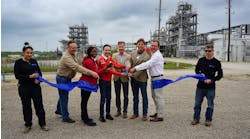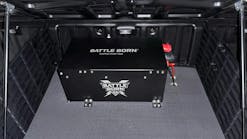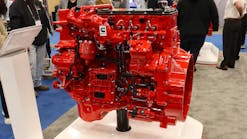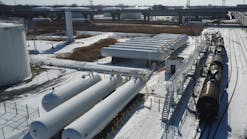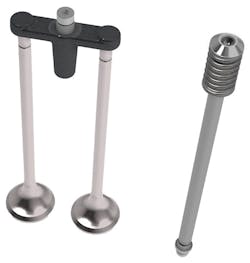Cummins Valvetrain Technologies reports positive results from further on-road testing of its Jacobs cylinder deactivation (CDA) technology, which is designed to improve the environmental and economic performance of heavy-duty road vehicles.
Fuel savings of 2.76% were returned in the first SAE J1321 (Society of Automotive Engineers) standardized fuel consumption testing of Jacobs CDA, using fully loaded comparison trucks on a highway route in North America. Similar tests on a distribution route returned fuel savings of 2%, according to Cummins.
Impending emissions legislation in North America (EPA 27) and Europe (Euro 7), which covers both NOx and CO2 emissions, are pushing engine designers harder than ever before in the search for greater efficiencies. Working from a 2019 baseline, the EU will require a vehicle-by-vehicle 45% reduction in CO2 by 2030, a 56% reduction by 2035, and a 90% reduction by 2040.
The CDA system uses Jacobs’ expertise in valve control to automatically shut down selected cylinders in low-engine load conditions by leaving their inlet and exhaust valves closed throughout the four-stroke cycle, while their fuel injectors are deactivated. This reduces fuel consumption. When additional engine braking is required, the same components that deactivate the cylinders are repurposed to provide vehicle retardation using the latest 1.5-stroke High Power Density version of the Jake Brake compression release engine brake.
Toxic emissions also are reduced because CDA optimizes the efficiency of exhaust aftertreatment systems through thermal management as CDA increases exhaust temperatures at part loads, Cummins added. It also eliminates cooling during engine motoring, where tests also revealed a reduction in parasitic drag when the engine is in over-run, saving fuel. Shorter journey times were also reported.
The tests were conducted using a 2018 International LT625 6x4 tractor unit with a 13-liter Navistar A26 450 hp diesel engine and Eaton Endurant 12-speed overdrive AMT gearbox, both with a gross vehicle weight of 66,000 lbs. Tests were conducted over 12,000 miles in Q4 of last year, according to the SAE J1321 standard fuel economy protocol. The truck was run multiple times both with and without CDA active via a dashboard switch. The truck recorded an average speed of 51 mph on the highway route and 38 mph on the distribution route.
Every run saw the test truck accompanied by a comparable control vehicle with its fuel consumption also recorded, to provide a baseline to account for variations caused by external factors such as weather and traffic conditions.
The on-road, real-world results from a fully loaded truck follow the reporting by Jacobs of initial fuel economy improvements of up to 20% in dynamometer-based lab testing of an engine in idle mode in 2020. In that same lab test, a 77% reduction in NOx was recorded on a low load cycle with a 2018 aftertreatment system. While NOx emissions testing was not a focus for this latest road test, the test trucks had the same calibration compliance to EPA 2018 standards, and we expect these results to further improve for future emissions requirements where the benefits of CDA thermal management are further utilized.
Saving fuel and reducing emissions
CDA saves fuel by reducing the number of active cylinders to match the driver’s real-time torque demand. The active cylinders have higher loads and temperatures, while the inactive cylinders have reduced parasitic losses. The reduced airflow, and air-fuel ratio in the remaining active cylinders, help maintain exhaust system temperatures above the critical 250 degrees C mark to allow efficient NOx conversion by the selective catalytic reduction module and continued passive regeneration of the exhaust PM filter.
On the highway tests without CDA, temperatures in the truck’s SCR unit fell below 250 degrees Celsius for over 15% of the journey time, but when CDA was used in concert with the Jacobs Engine Brake, SCR temperatures fell below 250 degrees C only during the scheduled stops and trailer swaps. On the distribution route, the mean temperature of the SCR unit was 243 degrees C with CDA engaged; 16% above the figure recorded without cylinder deactivation.
Time spent with the SCR operating under 250 degrees C was reduced by over 21%, and SCR temperature with CDA only fell below 200 degrees C for under 2% of the time compared to over 10% of the time in six-cylinder mode.
Cummins’ on-road testing confirmed that, with optimized engine and cab mounts, NVH was equivalent to the non-CDA-equipped standard engine and vehicle while at 600 rpm in idle, as measured at the driver’s seat.
Cummins Valvetrain Technologies has deployed CDA systems into over 20 development programs, with engines ranging from 2-liter to 16-liter. A number of programs have moved into the vehicle testing stage, Cummins said.

